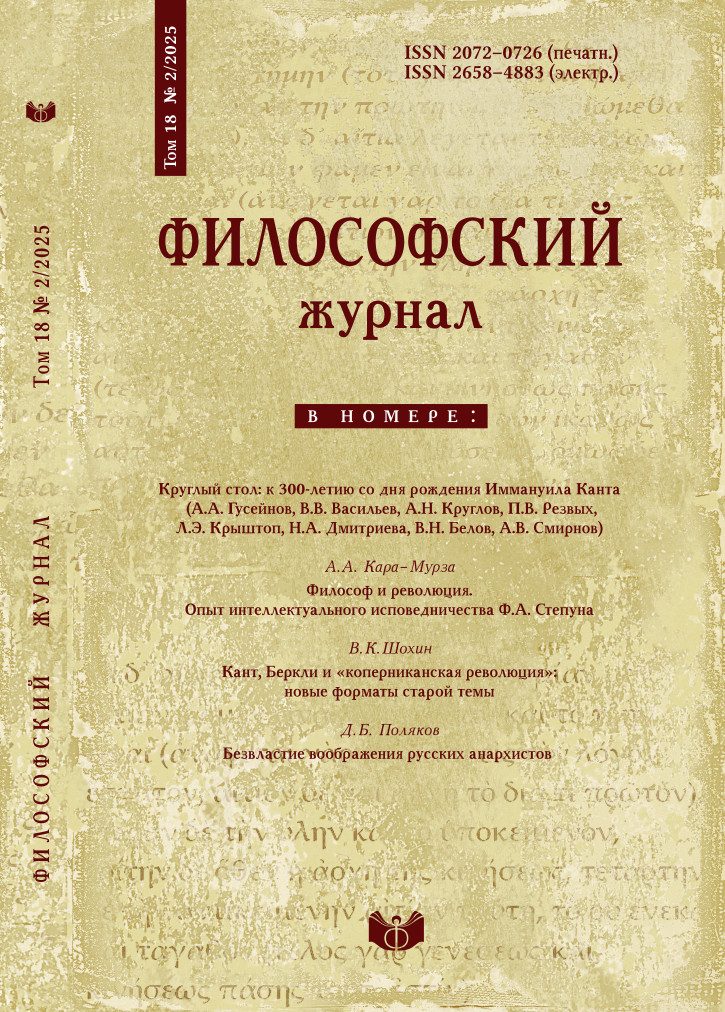Kant, Berkeley and “Copernican upheaval”: a new format of the old standing issue
DOI:
https://doi.org/10.21146/2072-0726-2025-18-2-122-134Keywords:
idealism, realism, external objects, perceptions, ideations, virtual polemical dialogues, Kant, Berkeley, the Vijňānavādins, ŚaňkaraAbstract
The author deals with the historical context of the eminent Kantian Copernican upheaval in philosophy, which from his point of view cannot be correctly conceived without proper understanding of the real correlation of critical philosophy with Berkleyan idealism. In spite of the historical facts that Kant insisted on his large debt to Hume and tried to prove his utter incompatibility of his theory with Berkeley’s doctrine whom he had pretendedly utterly refuted, “philosophical facts” show the opposite. The author offers an experience in the shape of a virtual letter of the Bishop of Cloyne to his posthumous opponent wherefrom issues that Kant only accomplished what he had started, whereas in a dialectical way, i.e. by peculiar restoration of realism, while it was just Berkleyan laboratory wherein tools for the revolution under discussion were elaborated. A justified criticism of Kantian classification of idealism is also contained in the virtual Berkeley’s letter as well. In conclusion intercultural parallels are offered between Berkeleyan idealism and that of the Vijňānavāda Buddhism and with Śaňkara’s refutation of the Buddhist attempt to remove external objects. As in the case of Berkeley and Kant, here the same dialectical interplay of revolution and restoration took place inasmuch as Śaňkara was also deeply indented to his opponents.






